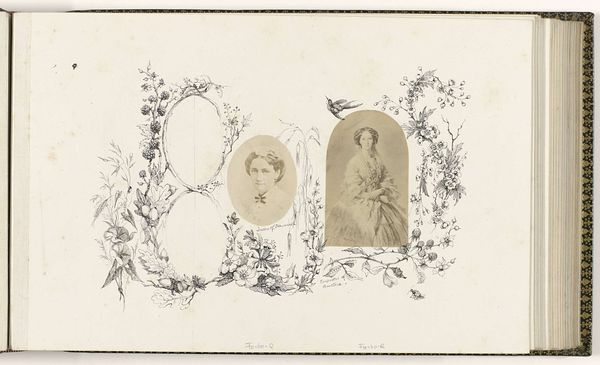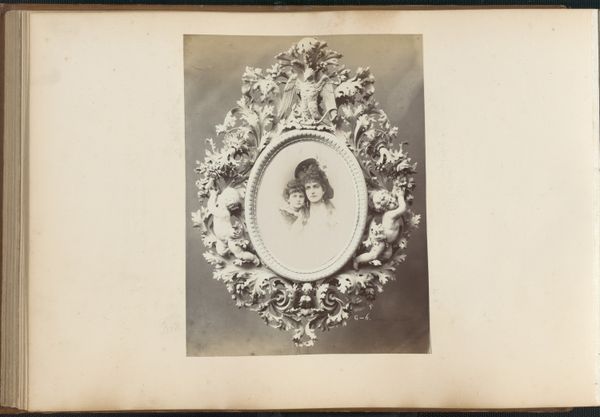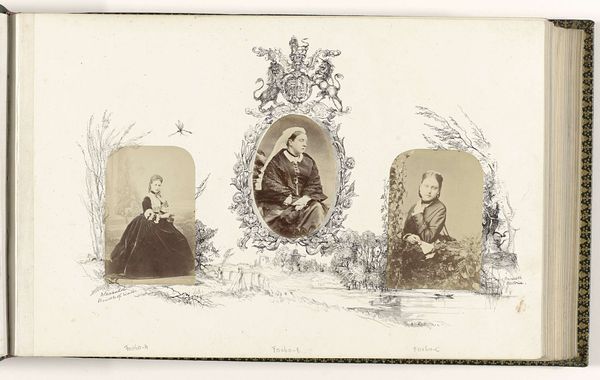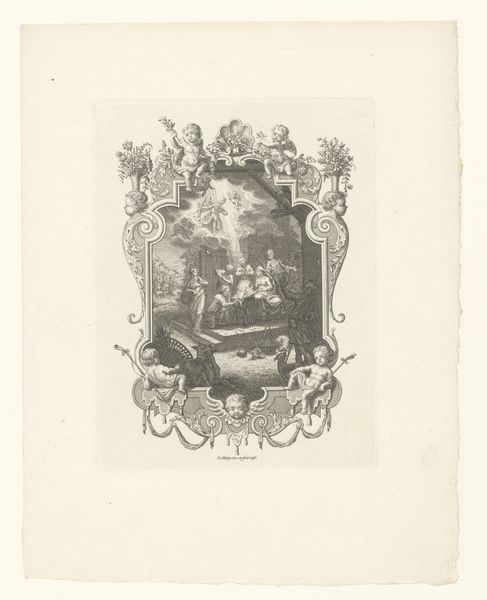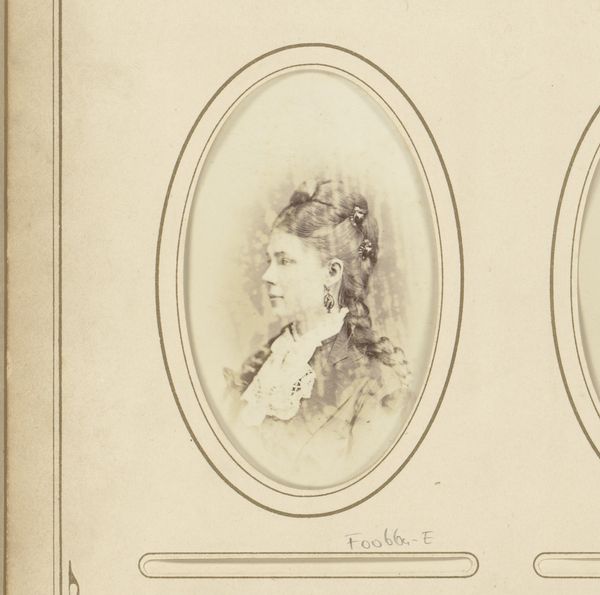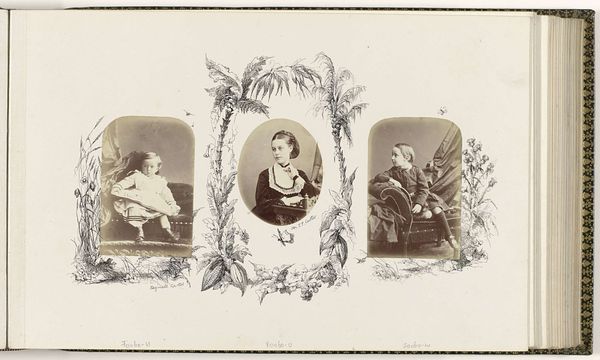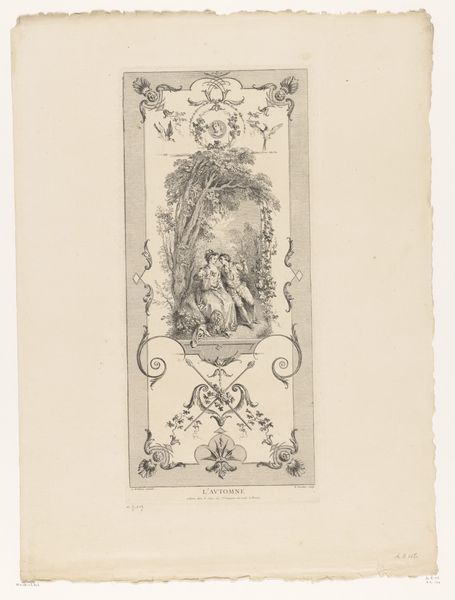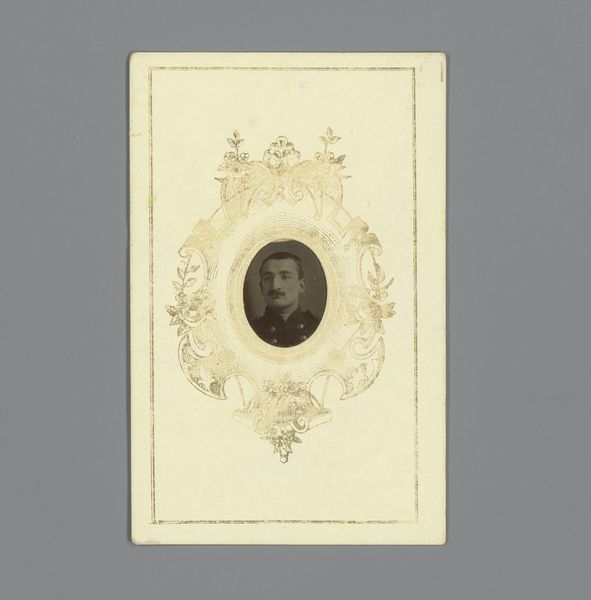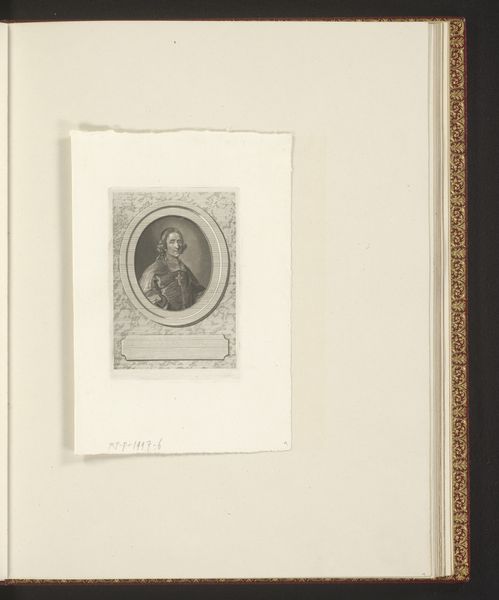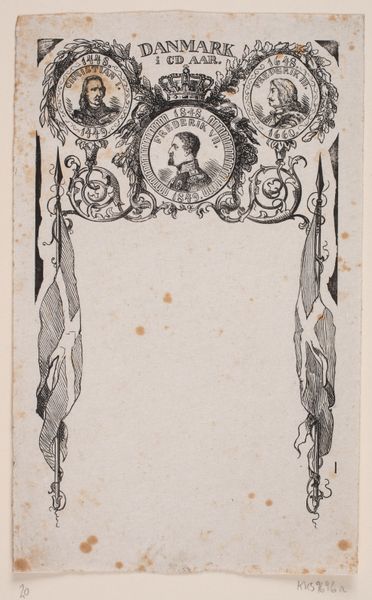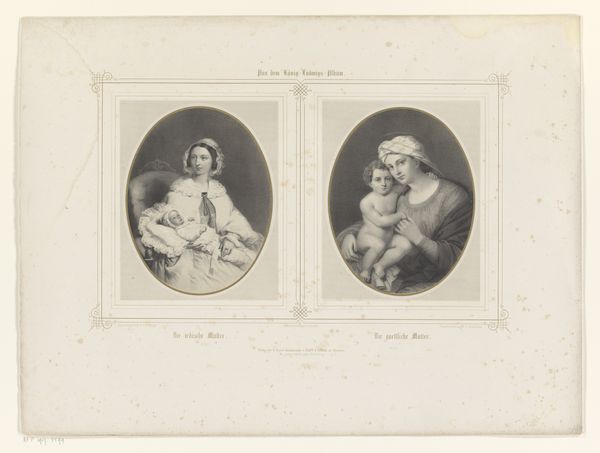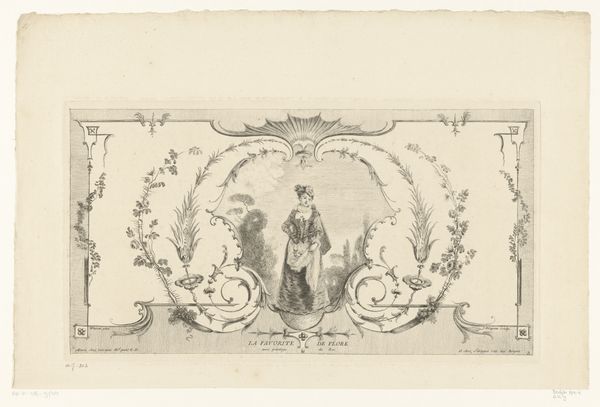
photography
#
portrait
#
photography
Dimensions: height 80 mm, width 53 mm
Copyright: Rijks Museum: Open Domain
Curator: Here we have what’s thought to be an 1870s photographic print from an album, entitled "Portret van prinses Marie van Edinburgh," showing the princess at different stages of her young life. What strikes you upon viewing it? Editor: It's remarkably decorative, with a rather saccharine aesthetic. The oval portraits are set within elaborate botanical frames—almost overwhelmingly delicate. Curator: These albumen prints were very popular among the aristocracy for their relative permanence and affordability, serving as both keepsakes and instruments for crafting a public image. What does the rendering of that public image say to you here? Editor: The soft focus certainly imparts a dreamy, innocent air to both portraits. The almost total absence of stark contrast leads my eye to focus not on facial expression, but more on decorative detail: ribbons, floral patterns. I’m quite taken by how it prefigures some of the aesthetic concerns of art nouveau. Curator: The floral decoration, though beautiful, isn't merely ornamental. Floral arrangements in this period were rife with symbolism, frequently used to express virtues or status, subtly crafting a very specific image for a princess destined for a politically motivated marriage. Notice also the heavy retouching, especially around the features of young Marie; this speaks to very controlled standards of beauty being reinforced from childhood. Editor: That's true. I also notice the contrasting scale in the rendering of both women's attire and decoration in relation to the total photographic frame - where the young Marie's rendering displays significant, more expressive detail than that of Marie as a slightly older child. It directs our vision in particular ways to the different social expectations and standards being imprinted. Curator: Exactly, and how the framing motif flattens individual expression by emphasizing archetypes that speak less of lived experience and more to idealized identity. Editor: Well, on purely aesthetic terms, I'm interested to consider this flattening as the conceptual groundwork for a future era dominated by design ubiquity and replication of imagery. Curator: Fascinating – almost like looking at seeds of our contemporary world! Editor: Precisely. It is more rewarding than initially assumed.
Comments
No comments
Be the first to comment and join the conversation on the ultimate creative platform.
